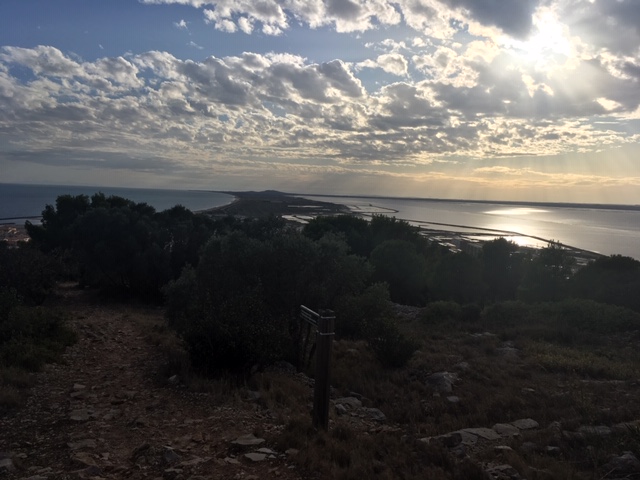
Vu d’ici
Close your eyes and breathe deeply; it’s like you’re in a tree house in the top of a majestic pine forest. The smell is thick and sweet, cinnamon-sea. The pines extend into an urban forest protected by the municipality, la Fôrêt des pierres blanches (the White Stone Forest) that spills into red roof houses and roads, across the lagoon to towns and hills. This is the view from our perch in Sète.
It’s nature’s bounty and humanity’s footprint. Birds chirp in the trees, but the roar of traffic below cuts through. The hills are dotted with dozens of wind turbines that twinkle at night, signaling the potential of transition to a cleaner economy — but if you look closely you see clearcuts and grey scars from a recent forest fire. The lagoon is crisscrossed with thousands of neat ‘tables’ that grow oysters and mussels, a regional pride and job creator — but with global warming and pollution, production has dropped to a third of what it was a few years ago.
Protected spaces, polluted places — the view from here is a microcosm of the world. It speaks to humanity’s potential and nature’s miracles, along with the warning signs that we are very close to reaching its limits.
A word about perspectives: I have long believed that there is no such thing as objectivity and neutrality. We’re all conditioned by our genetics, our past experiences and our economic, cultural, educational and social situations, and it’s impossible to totally step out of that or ignore it; the best we can do is be aware of it. So while when living somewhere new I can’t let go of who I am, I can try to look at the world through the lens of this place and these people, and hopefully, come away with another dimension to deepen my perspective.
